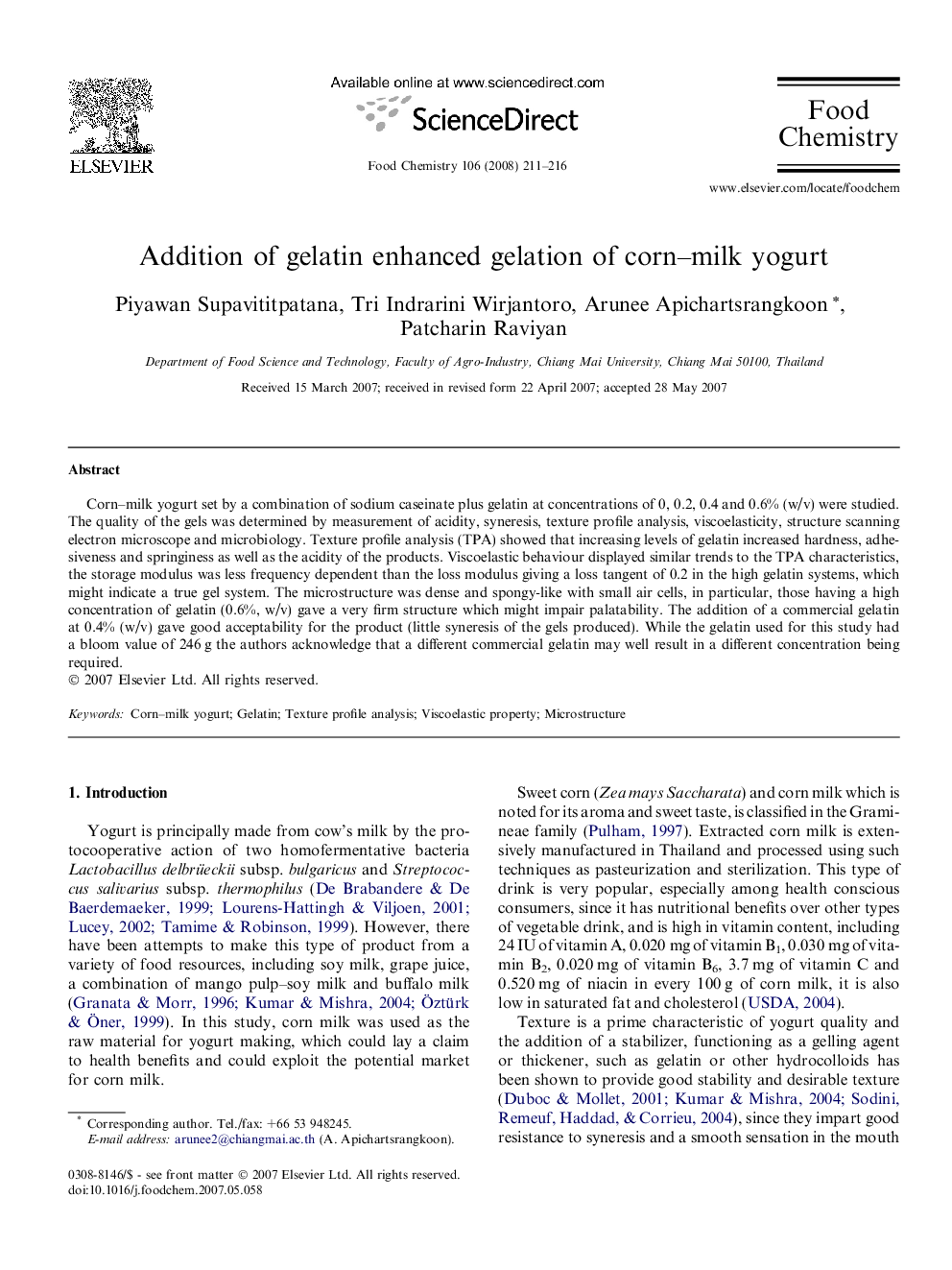| Article ID | Journal | Published Year | Pages | File Type |
|---|---|---|---|---|
| 1189108 | Food Chemistry | 2008 | 6 Pages |
Corn–milk yogurt set by a combination of sodium caseinate plus gelatin at concentrations of 0, 0.2, 0.4 and 0.6% (w/v) were studied. The quality of the gels was determined by measurement of acidity, syneresis, texture profile analysis, viscoelasticity, structure scanning electron microscope and microbiology. Texture profile analysis (TPA) showed that increasing levels of gelatin increased hardness, adhesiveness and springiness as well as the acidity of the products. Viscoelastic behaviour displayed similar trends to the TPA characteristics, the storage modulus was less frequency dependent than the loss modulus giving a loss tangent of 0.2 in the high gelatin systems, which might indicate a true gel system. The microstructure was dense and spongy-like with small air cells, in particular, those having a high concentration of gelatin (0.6%, w/v) gave a very firm structure which might impair palatability. The addition of a commercial gelatin at 0.4% (w/v) gave good acceptability for the product (little syneresis of the gels produced). While the gelatin used for this study had a bloom value of 246 g the authors acknowledge that a different commercial gelatin may well result in a different concentration being required.
